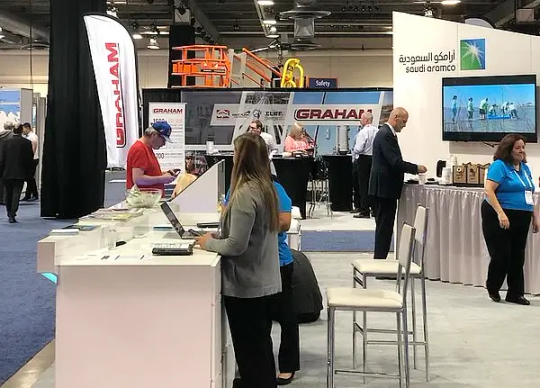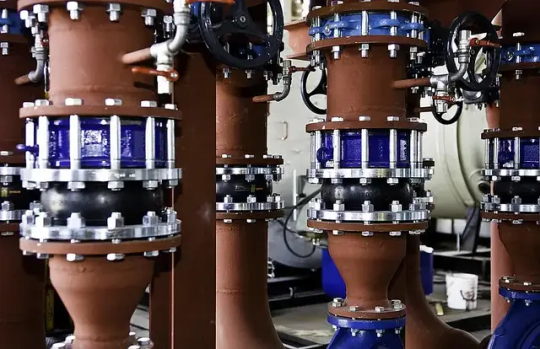#CO2sequestration
Text
Aramco: Leading the Way to Sustainability

Paving the Path to Carbon Neutrality
Saudi Arabia's 2060 Net-Zero Ambition
Riyadh, Saudi Arabia – In a bold move towards addressing climate change and curbing greenhouse gas emissions, Aramco, one of the world's foremost integrated energy and chemicals companies, announced a suite of groundbreaking projects aimed at reducing its carbon footprint.
These initiatives, unveiled on the sidelines of MENA Climate Week 2023, represent a significant step towards Aramco's ambition of achieving net-zero Scope 1 and Scope 2 greenhouse gas emissions across its wholly-owned and operated assets by 2050, while also aligning with the Kingdom of Saudi Arabia's 2060 net-zero goal.

Amaco in Calgary, 2019. Photo by Jason Woodhead. Flickr.
Innovative Approaches for a Sustainable Future
Ahmad Al Khowaiter, Aramco's Executive Vice President of Technology and innovation, expressed the company's commitment to innovative solutions to combat climate change.
"These projects highlight just some of the innovative ways that Aramco aims to help mitigate greenhouse gas emissions and address climate change," he said.
"This includes new and groundbreaking approaches that align with our vision of a circular carbon economy."
Lower-Carbon Hydrogen
Following the success of a pilot project in Denmark, Aramco is set to collaborate with Topsoe, an industry leader in energy-efficient technologies, to construct a lower-carbon hydrogen demonstration plant at the Shaybah Natural Gas Liquids (NGL) recovery plant in Saudi Arabia.
Expected to produce six tons of hydrogen per day, the plant will employ renewable electricity for electrified steam reforming of hydrocarbons, yielding lower-carbon hydrogen for power generation, with captured CO2 subsequently sequestered.

New energy savings boiler plant. Photo by USACE Europe District. Flickr.
Direct Air Capture
Aramco is also partnering with Siemens Energy to develop a Direct Air Capture (DAC) test unit in Dhahran, Saudi Arabia. With the capacity to capture up to 12 tons of CO2 per year, the test unit is a precursor to a larger pilot plant expected to capture a staggering 1,250 tons of CO2 annually, scheduled for completion in 2024.
Novel CO2 Sequestration
In yet another innovative stride, Aramco has successfully piloted a CO2 sequestration method using in situ mineralization. The process involves dissolving CO2 in water and injecting it into volcanic rocks in Jazan, Saudi Arabia, resulting in the permanent conversion of CO2 into carbonate rocks.
This pilot project was a collaborative effort between Aramco and the King Abdullah University of Science and Technology, introducing various technologies to enhance efficiency and reduce costs.
Geothermal Energy
Aramco is also exploring the expansion of its renewable energy portfolio through geothermal energy, leveraging naturally heated underground aquifers to produce electricity. Identified areas on Saudi Arabia's west coast have already been mapped using advanced subsurface technologies, and investigations are underway to assess the extent of geothermal resources at each location.

Vintage photo of Aramco workers. Photo by Tribes of the World. Flickr.
Aramco's Transformation into a Sustainable Energy Leader
Aramco, officially known as the Saudi Arabian Oil Company, has a rich history and ambitious future objectives. Established in 1933, it has played a central role in shaping the global oil industry and boasts vast reserves of crude oil and gas fields, making it the world's largest integrated oil company. Yet, Aramco's vision extends beyond traditional hydrocarbons, aligning with Saudi Arabia's Vision 2060 net-zero goal.
Pioneering Clean Technologies
Aramco is actively investing in research and development projects focused on clean technologies, such as hydrogen fuel cells and carbon capture, as part of its transition towards a sustainable energy future. The company aims to be at the forefront of innovation, driving progress across various sectors globally.
While its status as a dominant oil producer will remain pivotal for the foreseeable future, Aramco's vision surpasses conventional boundaries. The company aspires to be not just an energy provider but a catalyst for innovation, pushing the envelope and championing sustainable practices. In doing so, Aramco exemplifies how even traditional energy giants can pivot towards a more sustainable and environmentally conscious future.
Sources: THX News & Aramco.
Read the full article
#Aramco#Circularcarboneconomy#Cleantechnologies#CO2sequestration#DirectAirCapture(DAC)#Emissionsreductionsolutions#GeothermalEnergy#Lower-carbonhydrogen#SaudiArabianet-zero#Sustainableenergyleader
0 notes
Text
How whale poo can alleviate climate change
Whales are the world’s unsung heroes. One whale is worth thousands of trees in carbon capture and their poo is essential for phytoplankton to grow —phytoplankton absorb more than 4x the Amazon Rainforest, and contribute between 50-85% of the world’s oxygen.
“Whales are ecosystem engineers, They help maintain the health and stability of the oceans, and even provide services to human society.”—Asha de Vos, Marine Biologist
THE WHALE PUMP explained
whales dive deep in search for food
whales travel far
resurface to breathe
release enormous fecal plumes
the poo contains essential nutrients from the depths to the surface
these nutrients stimulate phytoplankton growth
phytoplankton produce oxygen and absorb CO2
phytoplankton forms the basis of all marine food chains
The amazing aspect of the whale pump is that it creates a vital nutrient cycle around the world, as whales are constantly migrating they are also always adding necessary nutrients to different corners of the ocean.
WHALE CARBON STORAGE/SEQUESTRATION
Phytoplankton are carbon fixers = breathe CO2 and use it to grow, when they die they keep the carbon with them.
When 1 whale dies, its carcass sinks to the bottom of the sea. That carbon is stored with it and isn’t released into the atmosphere. It is estimated that 33 tons of CO2 are stored with just 1 carcass, in comparison 1 tree absorbs 48 pounds of CO2 per year.
Every year it is estimated that whales transport 190,000 tons of carbon to the bottom of the sea—equivalent to taking 80,000 cars off the road for one year.
COMMERCIAL WHALING TODAY
There was a time when tens of millions of whales roamed the Earth….right before commercial whaling. In the 18th century this industry almost brought this majestic creature to extinction. Today, whale populations are slowly bouncing back, but their importance for a stable climate remains unappreciated.
The more whales, the more CO2 is sequestered!
In 1982 the International Whaling Commission placed a moratorium on commercial whaling on all whale species from 1986 onwards. All member states must abide.
Norway and Iceland were the two countries to object and continued with the practice. Iceland has not caught whale since 2018.
In 2019 Japan left the IWC and began to catch whales. As a non-member, the moratorium doesn’t apply.
3 ways you can protect whales:
Support 30 x 2030 and MPAs to ensure that whales, all marine ecosystems and humans have a stable ocean and climate in the future.
Sign petition that urges Japan and Faroe island to stop their whaling practices
Go plant-based. Try our fish-free challenge!
#2021Q4#commercialwhaling#fishing#whales#carbonstorage#carbonsink#marinelife#marinecosystem#poo#whalepoo#phytoplankton#trees#co2#co2sequestration#whalepump
0 notes